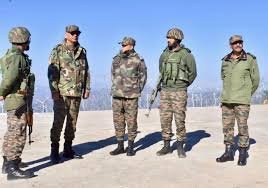The Balakot airstrikes, in retaliation for the Pulwama terror attack, set a new threshold for non-nuclear military response by India. Within 24 hours of the strike, the Indian and Pakistani air forces engaged in a brief aerial duel. Wing Commander Abhinandan Varthaman was captured after his aircraft was shot down in Pakistani territory, though the skirmish ended soon after.
The Army’s three regional commands — Northern Command (Udhampur), Western Command (Chandimandir) and South Western Command (Jaipur) — tasked with countering Pakistan, have since war-gamed multiple scenarios. Each of these has been validated on the ground through exercises, with planners assessing likely Pakistani responses, sources added.
War-gaming is an ongoing process, updated constantly in light of evolving technologies and adversary capabilities. The growing role of drones, loitering munitions and long-range missiles — seen in conflicts like Ukraine-Russia and in West Asia — has reshaped how future wars could unfold.
The aim, officials said, is to develop responses that can neutralise threats without allowing the adversary to expand the conflict zone. “The Army’s plans are ready,” said an official.



















